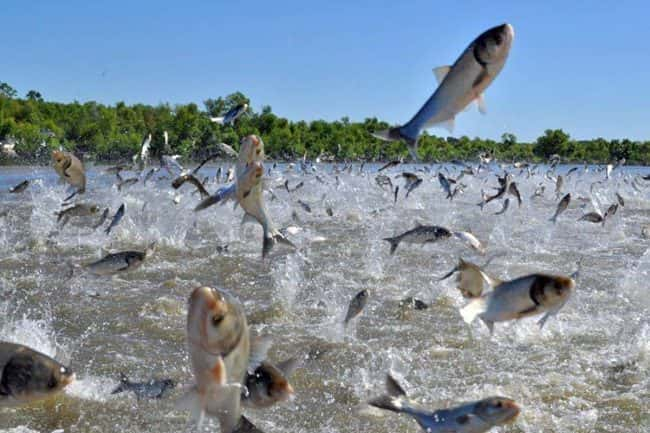
Tennessee Wildlife Federation, one of the largest and oldest nonprofits dedicated to conserving the state’s wildlife and natural resources, is hailing a significant funding win in the battle against invasive Asian carp.
“Federal legislators have stepped up again to fund Tennessee’s fight against Asian carp, which are destroying native species and harming local economies,” said Michael Butler, CEO of Tennessee Wildlife Federation.
The Water Resources Development Act of 2020 (WRDA) was passed by Congress, as part of an omnibus package, on Monday, December 21.
WRDA is a set of laws periodically updated to deal with water issues such as environmental needs, flood control and navigation.
This year’s version includes $25 million dedicated to projects to manage and prevent the spread of Asian carp in the Tennessee and Cumberland river basins. The Act does not require funds to be spent specifically on barriers but these are widely viewed as the leading method for limiting the movement of Asian carp.
This single appropriation could reasonably fund three to five barriers that often use combinations of sound, light, bubbles and other technologies. One such barrier is currently being tested at the Barkley Dam, separating the Cumberland river basin from the Ohio River Basin.
“These barriers are an essential part of the block and tackle method of managing Asian carp,” said Frank Fiss, Tennessee Wildlife Resources Agency’s chief of fisheries. “We have observed very little reproduction by carp in the Tennessee River, especially upstream of Kentucky Lake. Throughout the valley, steady immigration from downstream reservoirs is the greatest concern, and this is a problem that we can control with barriers.”
The Act also establishes an Asian Carp Eradication Program in the U.S. Fish and Wildlife Service. It will provide $4 million a year for 2021 through 2025. Priority will be given to states in the Tennessee and Cumberland River watersheds.




